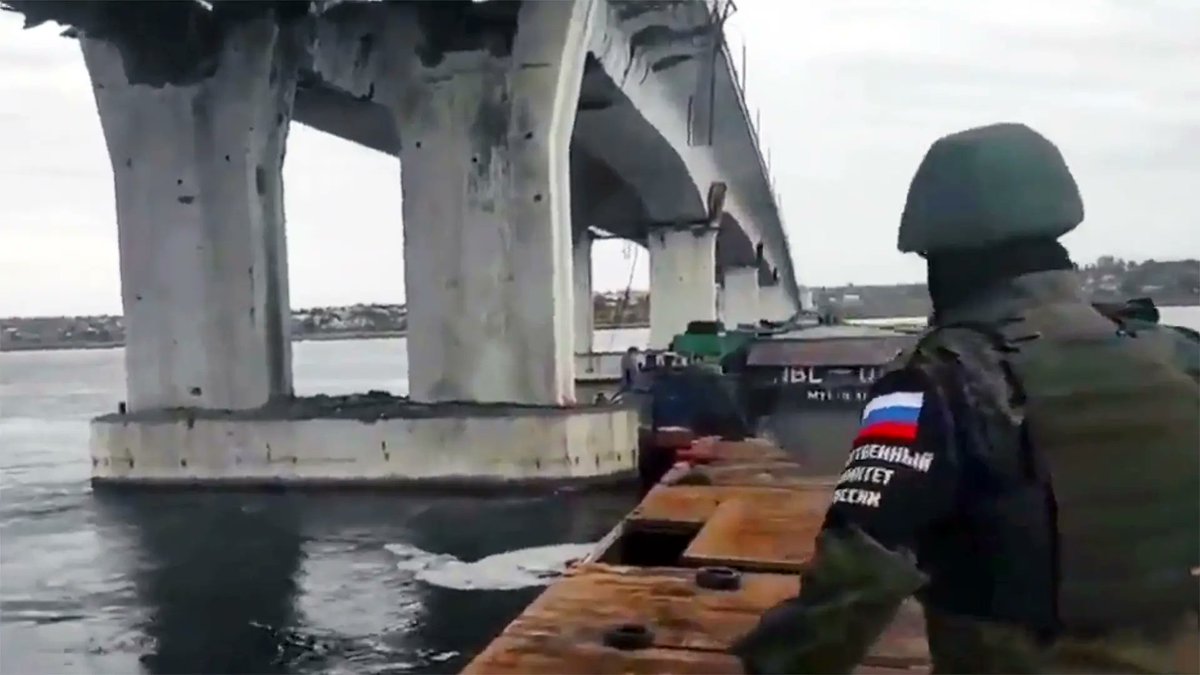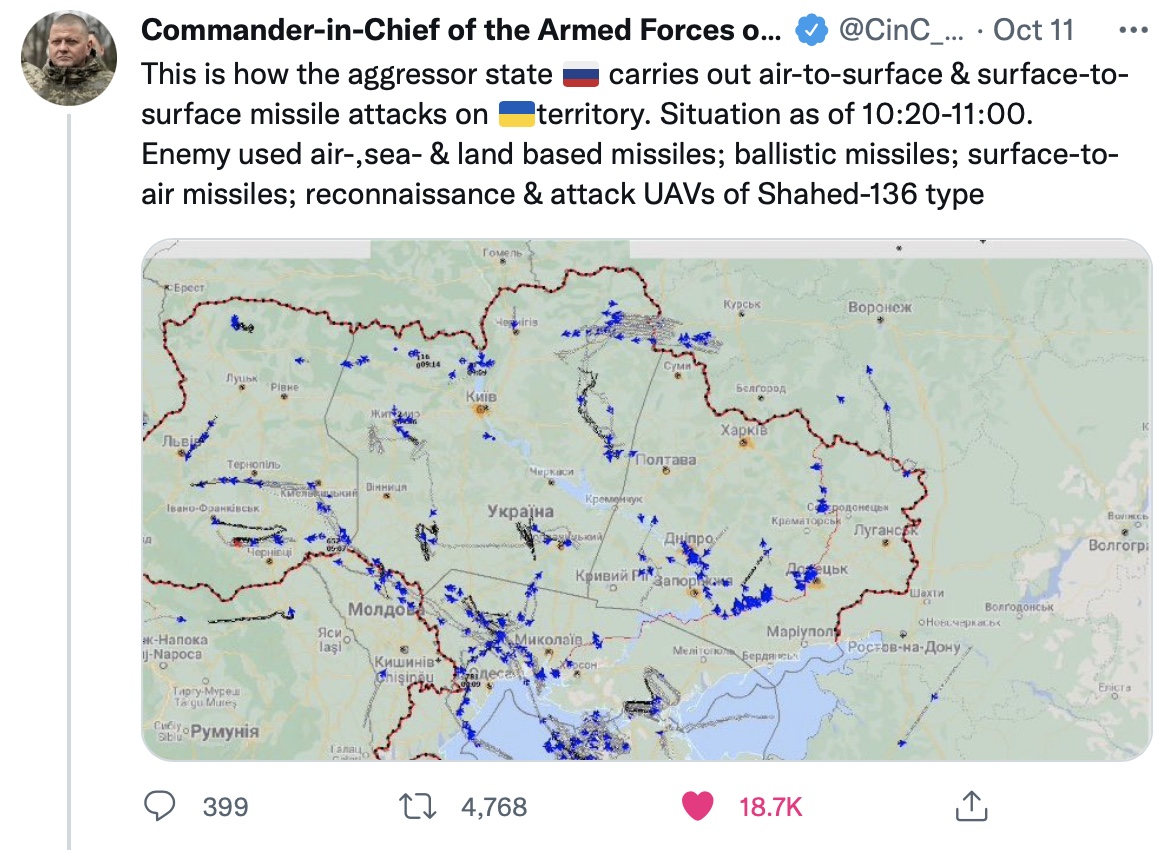
More details are emerging about the Ukrainian attack on Russia’s Black Sea Fleet in occupied Crimea. Lots more clarity to come in the following days, but a few immediate observations are possible. 1/20 🧵 #Sevastopol
https://twitter.com/JamWaterhouse/status/1586358395933970433
2/ First, it is clear that #Ukraine’s ability to target Russian forces continues to expand beyond the battlefield. Operational and strategic targets are now in their sights, underpinned by good intelligence and long range strike tools like #HIMSRS and maritime drones.
3/ This will place even more stress on a Russian military that is struggling to hold its ground in the areas of #Ukraine they have occupied. Mobilized troops will be little help in preventing the kind of attacks that just occurred in #Sevastopol
4/ Second, Ukraine continues to focus on military targets in these operational and strategic strikes. With these #Sevastopol strikes, Ukraine is degrading the capacity of the Russians to launch sea-based missiles at Ukraine.
5/ Ukraine is also sending the message to Russia, as well as Ukraine’s supporters in the west, that Ukraine is fighting against the Russian military and NOT the Russian people. This is important strategic messaging.
6/ Third, the Ukrainian cost-benefit analysis for this attack would have considered whether Russia would stop grain exports as a result. But, once again, the strategic messaging of Russia doing so is all bad for Russia. washingtonpost.com/world/2022/10/…
7/ Fourth, this attack again shows how adaptive the Ukrainians are. They have rapidly developed a new maritime strike capability, adding to their growing long range strike arsenal. navalnews.com/naval-news/202…
8/ Importantly, Ukraine has integrated this new weapon into their operational and strategic strike concepts. Having a new weapon is good; being able to cleverly integrate it into military warfighting concepts is the acme of military effectiveness.
9/ Fifth, Ukraine is serious about taking back its territory in #Crimea. President @ZelenskaUA has spoken about his several times in the past. These strikes are slowly corroding Russian military capacity in Crimea, and force Russia to look at its force deployment priorities.
10/ Here is a speech he gave on this topic recently: president.gov.ua/en/news/povern…
11/ Sixth, once again the Russians are showing that they are not taking their adversary seriously. The Ukrainians have previously attacked #Sevastopol with a drone, as well as other targets in Crimea.
12/ And, the Russians knew Ukraine has been developing this capability. It has been in the open press. Where did the Russians think they were going to use it?
13/ Therefore the Russian inability to adapt quickly to such overt and obvious threats is yet another indication of their sloppy professionalism and inability to conceive that they are fighting a Ukrainian military that is a world class military institution.
14/ Seventh and finally, both sides are increasingly resorting to remotely operated or autonomous systems in their operational and strategic strikes.
15/ While both sides have used UAVs for recon, surveillance and tactical strike throughout the war, the Russian use of Iranian drones and Ukraine’s use of maritime drones at #Sevastopol is a broadening of their use. @SamBendett is an expert on this topic.
16/ These systems, while cheaper to procure than crewed systems or more sophisticated missiles, still require good intelligence for targeting and post-strike assessment however. This element of long-range strike is not cheap and takes a lot of effort to develop.
17/ Both sides will have to invest even more in counter-drone and counter-autonomy systems. The object is to reduce the cost and manpower requirement of such systems so they are cheaper than the drones they destroy.
18/ As such, the war in Ukraine will be a testbed for these counter-drone systems, in all domains, as a ‘cost imposition’ capability.
19/ Anyway, these are just some very initial thoughts on the implications of the strike on #Sevastopol. We are sure to learn much more in the coming days. End. 

20/ Thanks to those whose images or work was used in this thread: @CovertShores @SamBendett @washingtonpost @DavidARader @JamWaterhouse
21/ A terrific summary here from @SamBendett on the attack as well.
https://twitter.com/SamBendett/status/1586457695569182720
22/ And of course, thank you again to all my #NAFO brothers and sisters around the globe. Your efforts are changing the world. 

• • •
Missing some Tweet in this thread? You can try to
force a refresh














